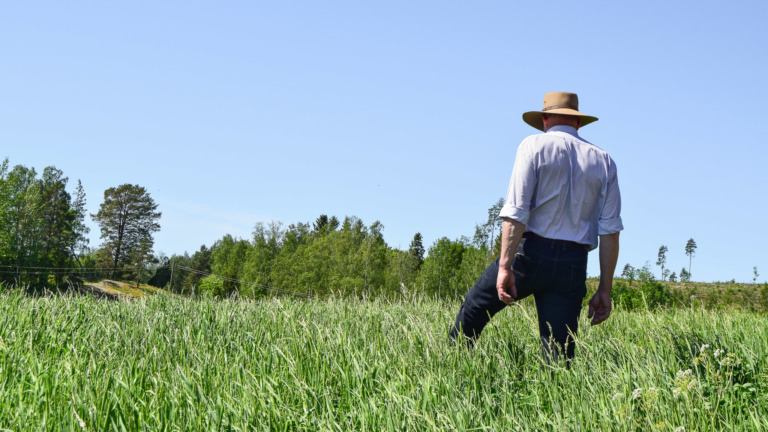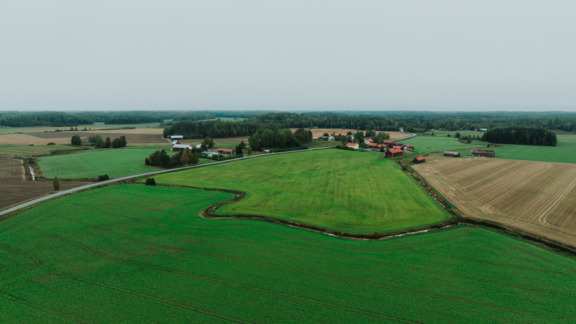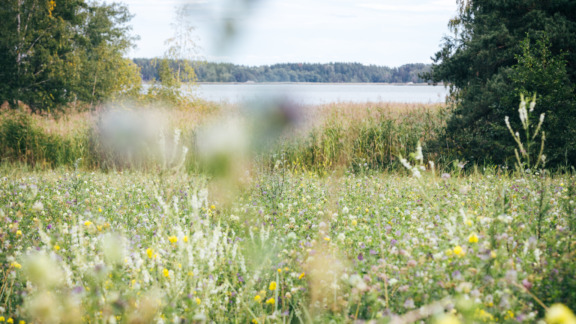General Criteria and a farmers learning pathWAY for regenerative farming
The general criteria for regenerative farming and a farmer’s learning pathway will help actors in the food chain monitor the development of farming practices that improve soil fertility and sequester carbon. BSAG has created the criteria in partnership with companies, researchers, and farmers on the Carbon Action platform.

Criteria to support the farmer and the business
The criteria for regenerative farming help farmers and businesses understand the conditions for regenerative farming.
BSAG has developed the criteria in collaboration with companies, researchers, and farmers on the Carbon Action platform with the aim of providing practical tools for monitoring farmers’ progress and actions.
There is no specific certification for regenerative farming and anyone can farm regeneratively, regardless of farm size and type of production. BSAG is not a farm auditing or certification body.
Regenerative farming criteria
General regenerative farming criteria for farms
BSAG’s criteria for regenerative farms aim at farming practices that improve soil health and increase soil carbon storage. The criteria are based on the farmer’s continuous learning and the basic principles of regenerative agriculture: maximise assimilation and microbes, and minimise tillage that disturbs the soil.
The criteria should always be specified according to the type of farming and geographical location of the farm.
1. Continuous development of competencies and operations
2. Purposefully improving and maintaining soil health
3. Biodiversity above and below ground is systematically reinforced
4. A diverse crop rotation
5. All-year-round, living vegetation cover is maximised
6. Minimised tillage
7. Nutrient use is based on plant needs and relies on organic fertilisers and biological nitrogen fixation
8. The use of plant protection products is minimised
The healthiest fields will still be able to produce harvests in the face of prolonged bouts of extreme weather, and their valuable topsoil will not leach into waterways.
Learning pathway for REGENERATIVE FARMING
Committed
Committed farmers know the relevant legal obligations and educates themselves in regenerative farming practices. They participate in discussions and learn from their peers, for example by joining a farmer network. Making a regenerative farming plan is also a requirement.
Active
Active farmers meet the general criteria for regenerative agriculture on at least part of their parcels. They monitor the achievement of the goals they’ve set in the regenerative farming plan.
Active farmers also invest in continuous learning and they have the ability to apply farming methods according to the conditions on the farm.
Advanced
Advanced farmers meet the general criteria for regenerative farming and understand the implications of the actions for their farm.
Measurement is an integral part of the continuous development of the farm and the farmer’s learning process.
Advanced farmers also act as a driving force in their community, actively encouraging their peers and sharing knowledge.
An example of applying the criteria on a cereal farm
How would the criteria for regenerative farming be applied to a cereal farm? The preconditions of our example are that the farm’s fields have functioning soil water management, no soil compactions, a good micronutrient balance, and a pH of 6-6.5.
The fields have a continuous vegetation cover, i.e. a true vegetative cover on at least 90% of the area during winter. The crop rotation is varied. The cultivation of annual crops of the same genus in successive years on the same plots is avoided. Annual, perennial, and mixed crops are rotated. The plots are cultivated with mixed crops or multi-species undersown crops.
Plant fertilisation is based on measurements, i.e. soil and plant analyses. Fertilisation is based on organic fertilisers, and the use of artificial fertilisers is minimised. Soluble nutrients are applied only in the amount corresponding to the immediate nutrient needs of the plant, i.e. 50 kg N/ha per application.
The fields are subjected to minimum tillage or shallow (<10 cm) soil mixing tillage. The crop is established during or after tillage.
The use of plant protection products is minimised, and mechanical and biological control methods are always the primary option. No insecticides or plant disease control agents are used except under exceptional circumstances. Field biodiversity is increased for example using nature management grass fields or diversity lanes.

Farm regeneratively
There is research data and experiential knowledge on regenerative farming out there. How each measure will affect a specific field will depend on factors such as field history, soil types, and local conditions, for instance, weather.
The Carbon Action research collects detailed information about the effects of different regenerative farming methods. The methods are being developed in collaboration with about a hundred farmers.
At the E-college for Regenerative Farming, you can learn more about soil-improving methods and find out how to apply them on your farm – completely free of charge.
CONTACT US




